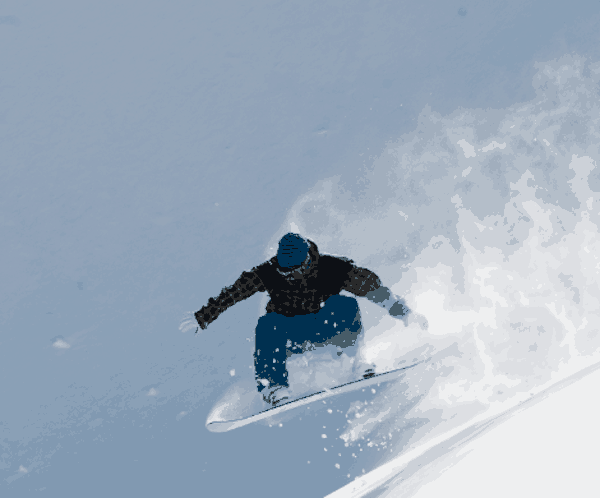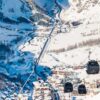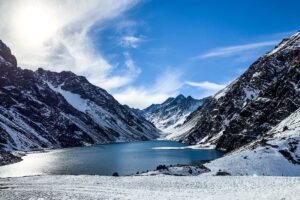
Everyone knows that a ski holiday doesn’t come cheap, especially when the basic holiday cost – as well as all those necessary extras such as equipment rental and lift pass – are taken into consideration. However, it is possible to keep costs down by booking the perfect ski holiday and sorting out your own travel, ski accommodation, equipment hire, lessons and lift pass. Here’s our guide to how to organise an independent ski holiday, what not to forget, and how to get the best out of it.
1. Find the Best Time of Year to Go
Avoid the crowds and book for January or March. Prices can be almost double in peak times like New Year and February half term, but January has the best deals. March is cheaper than February and conditions are still at their best. Post-Easter in the higher resorts are a good choice with lots of sunshine. Cheapest of all are the pre-Christmas and end of season weeks, as long as you are prepared to take a chance on the snow.
2. Choose the Easiest Way to Travel
Driving gives you flexibility, especially if you are travelling as a family. Flying with a small child and all the paraphernalia, skis or snowboards and boots, can be quite a logistical nightmare, but if you load the car up and set off in the evening, take the tunnel and drive overnight, your child will probably be asleep within 10 minutes of leaving home and wake as you approach the resort. Consider rail travel. It’s fun and almost as flexible as driving. See our future on plane vs train travel.
3. Get the Best Value Flights
If have your own skis or board, avoid the low cost airlines because absolutely everything comes as a costly extra. Check out our guide to airline luggage allowances to see which airlines include equipment and which do not. If hiring a car, make sure you book a ski roof rack and snowchains and/or winter tyres well in advance. Many resorts offer free open-air parking, but remember to bring a shovel as you may need to dig out your car at the end of the week. Our winter driving tips feature may be useful here.
4. Pre-Book Your Guide or Instructor
Don’t wait until the last minute, only to find ski or snowboard classes, private instructors or guides are fully booked. If you want to be sure of an English-speaking instructor, visit Skibro and book ahead. See our beginners’ shopping list.
5. Pack the Essential Clothing
If you haven’t skied before, read our beginners shopping list and borrow what you can from friends. Hire skis, boards, and boots in the resort where you can change them if they prove uncomfortable or unsatisfactory. If you are buying clothing, the first items to go for are warm gloves, goggles, a helmet, a base layer, snow proof jacket and trousers. For warmth, wear several thinner layers rather than one thick one.
6. Find the Most Suitable Accommodation
France is the country with the most convenient skiing, and you may be able to ski straight to and from your chalet or apartment door. If so, you can save money by coming home for lunch, or – in spring time – packing a picnic, rather than paying for a restaurant lunch. See our ski accommodation guide to choosing the right kind of ski accommodation.
7. Decide Whether to Eat In or Out
Although Italy, Austria and some of the lesser-known French resorts are relatively cheap, the major resorts in France and Switzerland are not. Self-catering is considerably cheaper than eating out so, if travelling by car, you can save even more by stocking up at a hypermarket en route.
8. Cut the Cost of Your Lift Pass
Some resorts offer discounts for online bookings, so check your chosen resort’s website before you go. If travelling with children, choose a resort with a higher upper age limit for child discounts, or special youth-rate lift passes.
9. Keep Safe
Minimise the risk of injury by getting fit before you go, either by joining a gym or doing your own pre-ski exercises at home with the help of our ski fitness pages. Alternatively, go on some brisk hilly walks or take a course of lessons on an artificial or indoor real snow ski slope. Protect your head: helmets are a vital safety measure – even for complete beginners. Don’t forget to apply a SPF30 or above suntan cream for a tan without burning.
10. Protect your Holiday
Make sure you pay by credit card, then you will be reimbursed if the product you are buying is faulty, unsatisfactory or goes bust. Don’t forget wintersports insurance for baggage loss and medical care – check out the specialists to find the best deal. If you are travelling in the EC, obtain an EHIC (European Health Insurance Card) by completing your details online. This entitles you to free or reduced cost medical care within member countries.
















Add Comment